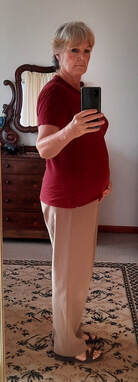 I’m the kind of person who believes that if something isn’t working, we should do something about it. That’s what I’m doing now regarding my fat tummy. I’m a healthy person, I don’t eat rubbish, I’m conscious of portion control and include lots of healthy items in my diet. BUT, I have a fat tummy and I have Never weighed as much as I do now. SO, time to do something about it. I do have some chocolate and enjoy a muffin most afternoons. According to Chinese medicine, fat is the accumulation of turbid fluid. Qi moves Fluid and if Fluid doesn’t move, it accumulates and forms Damp. If Damp is not transformed it congeals into Phlegm which is basically fat. 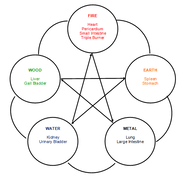 Now there are many reasons for this accumulation ranging from Stomach Heat, Spleen-Qi deficiency, Kidney-Yang deficiency through to Blood stasis. In the “circle of life”, everything impacts something else. As with the Five Elements, if one aspect of an Element is out of balance, it affects the rest of the Elements and, therefore, our health. My problem is definitely Spleen-Qi or Spleen-Yang deficiency. I know this because I eat a lot of cheese, have milk in my tea and enjoy a couple of spoons of yoghurt in my morning smoothy. Now these foods, even from a Western point of view, cause Damp. Secondly, I thoroughly enjoy my morning fruit smoothy. My body works well on it but it really contains too much sugar. Every morning I have a heaped teaspoon of green powder and a couple of teaspoons of collagen and having them with some smoothie makes them palatable. So, what I’ve decided to do is still make a smoothie but have a much smaller quantity which means less yoghurt and less muesli. So instead of filling the glass on the left, I used the smaller one. This morning I added a single egg scrambled with a chipolata sausage, a bit of green pepper and a slice of tomato. Eating mindfully is also important, which I decided to do. I turned off the TV and tasted my food, something I think we seldom do. If fact, after eating the scrambled egg I only had half the smoothie. 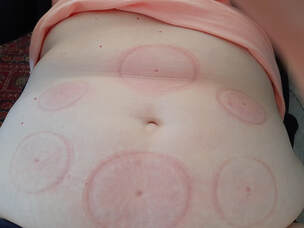 I’m lazy, there’s no doubt about it but once I realized that movement helps Qi to move, and if Qi moves it prevents stagnation, I’m now a little more motivated to jump on my trampoline. Something else I’ve done is use my acupuncture laser to work points specific to move Qi, resolve Dampness, and promote the transformation of Fluids. I also decided to do cupping on my stomach which aids peristalsis and draws blood to the abdomen to help clear toxins. The discolouration caused by the cups is indicative of how toxic the body is. I’m not too bad and the marks had totally faded by evening. 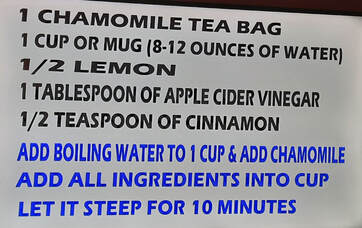 Another thing I’m going to do is drink more green tea and last night, whilst trolling YouTube, I came upon a video where a guy maintains that this drink, taken every night for 30 days, will aid weight loss whilst asleep. I’m not aware that I slept any differently last night and the dog woke me up at 6, as she always does, but I’m prepared to give it a try. Important to allow the chamomile tea to cool a bit before adding the apple cider vinegar. SINUS HEADACHE A headache from sinusitis is located on the face. The nose is stuffy, there is thick yellow discharge, a feeling of muzziness and local tenderness over the various sinuses. 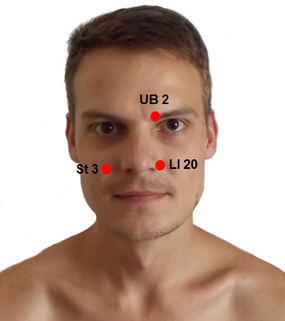 Points to relieve sinusitis are: St 3, LI 20 and UB 2 on the face. St 3 is in line with the pupil when facing forward, beside the nose LI 20 is in the dip beside the nostril UB 2 is on the inner edge of the eyebrow These are all local points to stimulate the flow of Qi to the face 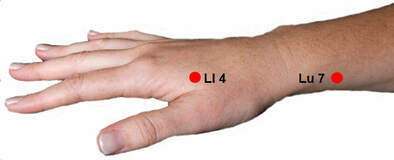 Lu 7 on the radial bone and LI 4 on the hand: Lu 7 is on the radial bone, you can find it if you interlock your thumbs with your forefinger along the bone. LI 4 is in the web between the thumb and forefinger but against the bone of the forefinger. Both points have a special effect on headaches and are particularly effective when held simultaneously. Avoid LI 4 during pregnancy 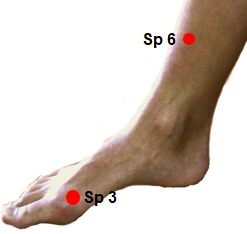 Sp 3 on the inside of the foot and Sp 6 on the inside of the leg. Sp 3 is on the edge of the bone at the base of the big toe. Sp 6 is 4 finger-width above the ankle bone, on the shin bone. It is usually tender. These two points are specific for resolving Dampness – which is what causes the headaches as well as being a manifestation of sinusitis. HEADACHES: According to Chinese medicine, there are many different reasons for a headache, including emotions like anger and fear, physical overwork, incorrect diet and excessive sex, or climatic conditions like Wind and Dampness. Many different meridians travel to the head. The Bladder meridian starts between the eyes and travels over the head and down the spine. The Gall Bladder meridian starts beside the eye and the Stomach meridian starts below the eye. The Triple Burner meridian ends beside the eyebrow. The Large Intestine travels across the jaw and ends beside the nose. Internally the Liver and Heart meridians travel to the eyes. The site of the headache gives an indication of which meridian may be the cause of the problem. 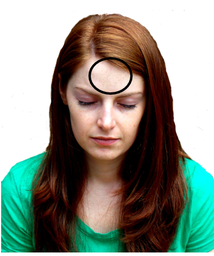 FOREHEAD HEADACHE A headache on the forehead is usually related to the Stomach and Large Intestine meridians. This type of headache has a heavy muzzy sensation because it is often caused by retention of Dampness or Phlegm. Points to relieve this type of headache are: Du 20, 23, St 8 & GB 14 on the head, LI 4 on the hand, P6 on the inside of the wrist, and Lu7 Sp 6 and St 36 on the leg, 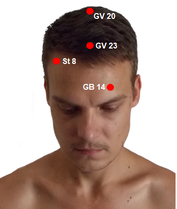 GV 20, GV 23, St 8 & GB 14 on the head GV 20 is the meeting point of the Governing Vessel, the Bladder, Gall Bladder, Triple Burner and Liver meridians. It benefits the Brain and sense organs and aids with headaches. GV 23 is used for congestion and blurred vision. St 8 removes obstructions from the channel, stops pain and resolves Dampness. GB 14 is the meeting point of the Gall Bladder, Triple Burner, Stomach and Large Intestine meridians. Used for headaches, dizziness and some eye problems 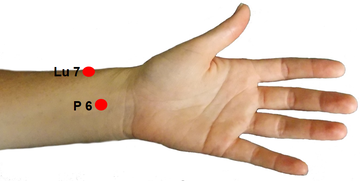 Lu 7 on the radial bone, P 6 on the inside of the wrist and LI 4 on the hand. Lu 7 regulates the ascending and descending of Qi in the head. P 6 calms the Mind and has a major effect of the Stomach 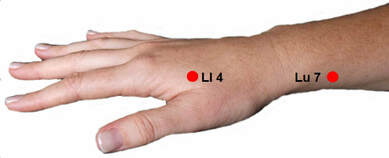 LI 4 removes obstructions from the channel, relieves congestion in the face and relieves pain. Avoid LI 4 during pregnancy. 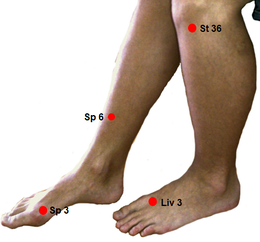 Sp 6 and St 36 on the leg as well as Liv 3 on the top of the foot. St 36 is a major point to tonify the Stomach, it moves Qi in the Stomach and Intestines Sp 6 is a major point to tonify the Spleen and together with St 36 strongly tonifies the Middle Burner, the area comprising the stomach and spleen. Liv 3 is another major point to subdue Liver-Yang and nourish Liver-Blood. It calms spasms, contraction and muscle cramps. It has a very calming effect on the Mind and is helpful with irritability, frustration and anger. I first read this in a book, and it had me stop and think, what REALLY gives us the most joy? This is an important topic because once we know what gives us the most pleasure, if we can incorporate that into our world as a way to earn money, then life comes to us with ease.
In asking people, I have come across four basic categories. There’s the teacher – the person who loves to share knowledge. There’s the artist – the creative one, the person who loses themselves when making something, be it at object, a painting or music. There’s the nurturer – the person who gets joy in making others happy, the mother who thrives on getting her family together or the animal lover or the nurse. This is a tricky one though because one’s happiness is dependent on other people. Then lastly there’s the adventurer, the person who thrives on travel and experiencing different cultures. As may be suspected, I love sharing knowledge, hence this post. If I can share knowledge about subjects I’m passionate about, like Traditional Chinese medicine or nutrition or supplements, then I’m in my element. I hope that you find what feeds your soul and brings you joy. Western Medicine sees illness as a result of infection due to various dreaded lurgies, like bacteria and viruses. Chinese Medicine has 3 basic causes of disease – Weather, Emotions and Other (like accidents).
It all basically comes down to a person’s immune system. If you’re happy, healthy, and have a strong immune system, you won’t get sick when sitting in a draft. If for some reason your immune system is down a little, you will, i.e. if the body is weak in relation to the climatic factor According to TCM, Defensive Qi flows in the area between skin and muscles. This flow of energy acts as a barrier to the outside world, preventing invasion of pathogenic factors. We believe that wind is the vehicle which carries pathogens into the body so sitting in a draft is sitting in Big Wind. Years ago, I visited a friend whose baby had just died. We were sitting outside, in a draft, and I remember wondering about the potential of illness. Because it was such a sad time, our energy was very low and the next morning I work up with a screaming cold. When we eat, our body takes energy from the food and sends it to the Lungs. The Lungs then turn some of this energy into Defensive Qi and sends it to the area between the skin and muscles, so the quality of the food we eat is important to our immune system. Besides protecting the body, Defensive Qi has other functions: it keeps the skin moist and warm, it partially nourishes the muscles and it controls sweating, thereby regulating body temperature. If Defensive Qi is weak, it will fail to hold fluids in the body leading to day-time sweating. Conversely, if one has a cold, herbs are given which induce sweating and the expulsion of the pathogenic Wind-Cold factor. As I mentioned, Wind is the vehicle through which pathogenic factors invade the body. Wind-Cold creates cold symptoms like a runny nose and eyes. Wind-Heat creates heat symptoms like fever and dryness. Wind-Cold can turn into Heat if not treated in time. Wind-Damp creates a feeling of heaviness and aching muscles. Often the invading pathogenic factor creates blockage in the area where Defensive Qi flows resulting in stagnation in the joints. The type of pain is explained pertaining to climatic factors too, i.e. Wind will lead to pain moving from joint to joint and will mostly be in the upper part of the body. Cold leads to intense pain in one joint. Dampness will result in swollen joints, usually in the lower part of the body. Invading pathogenic factors create many more situations, this article is intended as an example of how TCM looks at conditions so differently to the view of Western Medicine. 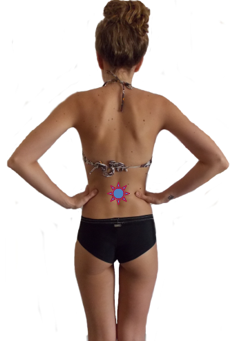 ChinaHerb have a number of fabulous products with interesting names. A knowledge of the basics of Traditional Chinese Medicine can help to understand why they work. The premise of Traditional Chinese Medicine (TCM) is that to be healthy, the body and mind must be in balance. Where there is cold – provide heat; where there is damp – induce dryness and so forth. The words Yin and Yang encapsulate this perfectly. Yin refers to dark, moist, cold, quiet, night, etc and Yang refers to bright, dry, hot, active, day etc. (Yin and Yang explain a world of other stuff as well). When we are conceived, we receive a precious substance called Pre-Heaven Essence from our parents. This, basically, forms our constitution. We can’t increase this Essence, but we can enhance it through what we eat and drink as well as our lifestyle. The nourishment which we receive from our food and drink creates Post-Heaven Essence. Together these Essences are stored in an area between the kidneys called the Gate of Life (Ming Men). Because the kidneys are so closely related to Essence and the Fire of the Gate of Life, they are understood to be the source of Yin and Yang in the body. Kidney-Yin is the root of all the Yin energies in the body as well as being the foundational substance of living. Kidney-Yang is the root of all Yang energies as well as the force for all physiological activity. At puberty, some Pre-Heaven Essence matures into Kidney-Essence which generates menstrual blood and sperm. As we age, Essence gets used up, and as it starts to decrease, signs of Yin deficiency appear. Yin-deficiency means that the symptoms seem like a hot condition but are not caused by heat, rather by the absence of Yin. Symptoms include night sweating, dry mouth or skin or vagina, and dry and irritated eyes. Many menopausal symptoms are related to Kidney-Yin deficiency. The herbal formula for Nourish Root Yin is specific to nurture Yin and the kidneys and can be used as a supplement to support the elderly. Key Symptoms and Signs for Use: Feeling hot in the chest, palms and soles Night sweating Tinnitus, loss of hearing, dizziness Sore and lassitude of back and legs Dry mouth and throat, or dry vagina, and dry skin Dry and irritated eyes Constipation from dry stools Aging Tinnitus Hyperthyroidism Hypertension Diabetes Pulmonary tuberculosis Chronic disorders of kidney Chronic optic problems Constipation Growth and pubertal delay 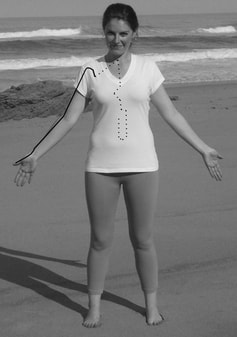 I had eczema on the outer thenar section (the fleshy part between the joint and the wrist) of my thumb for over a year, then it moved to the other side as well. Why on earth have eczema just there? I visited my friend for a SCIO session and her machine informed me that I had a gluten sensitivity. As soon as I stopped eating so much gluten, the eczema cleared up. I have a sensitivity, not an actual allergy but as soon as I do eat, say, a slice of bread and a biscuit, there is a slight tingling in this region. The meridians are energy pathways which flow in a continual loop up and down the body but are divided into 12 main sections and named after our abdominal organs. The energy is most vital at the fingertips and toes which is the first or last point of the meridian and is known as a Well point. The energy gradually gathers in flow and depth through four following points called the Spring point, Stream point, River point and finally Sea point which is situated at the elbows or knees. At the Sea point, the energy is vast and deep and moves into the interior of the body. On the Yin meridians and according to the Five Elements, the Well points pertain to Wood, the Spring points pertain to Fire, the Stream points pertain to Earth, the River points pertain to Metal and the Sea points pertain to Water. On the Yang meridians the Well points pertain to Metal and so forth The Spring points are used to treat Heat conditions and to clear Heat from the meridians. Liv 2 is great to disperse Liver-Yang so helps with headaches and red itchy eyes. The Lung meridian runs from just below the clavicle, up over it then down the arm ending in the thumb beside the nail. My eczema occurred around Lu 10 which is the 10th point along the meridian and the second last one before the end, i.e. the Spring point. But why there? The way I understand it is as follows: due to emotional issues, huge sensitivity to cigarette smoke and the Fynbos around where I live, my lungs are my weakest organ. The skin and lungs are closely connected both in western and Chinese medicine. In TCM the skin is under the control of the Lungs which keep it moist and which also disperses our Defensive Qi in the area between skin and muscle, Gluten creates inflammation in my system, known in Chinese medicine as Damp-Heat. Eczema is also a form of Damp-Heat Because the rest of me is pretty healthy, the Damp-Heat manifested in an area of weakness – the Lung meridian on the Fire/Spring point. Fortunately, I’ve discovered heaps of easy gluten free muffin recipes, so I really can have my cake and eat it. 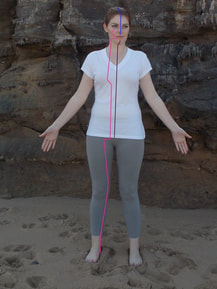 Both ladies hadn’t been able to fall pregnant for about a year and the doctors said that there was no specific reason. I investigated possible treatments according to Traditional Chinese Medicine (TCM). The menstrual cycle in Western medicine is largely composed of two main phases; the follicular phase and the luteal phase. In the follicular phase, increasing amounts of oestrogen cause the uterus lining to thicken and follicles in the ovary begin to develop. After several days, a dominant follicle releases an egg which is carried along the Fallopian tubes to the uterus. This is the ovulation period. The second, or luteal, phase is dominated by progesterone. The follicle which housed the egg becomes the corpus luteum and produces progesterone. If the egg is not fertilized and implanted, the corpus luteum shrivels and dies causing sharp drops in both progesterone and oestrogen. These hormone drops cause the uterus to shed its lining and menstruation begins. Traditional Chinese Medicine sees the menstrual cycle in four phases. Starting at menstruation, the flow of menstrual blood is under the control of Liver-Blood and the Penetrating Vessel. The follicular phase is when various hormones stimulate the development of the ova and the uterus develops a new layer of endometrium. In TCM, this is seen to be influenced by Liver-Blood, the Kidneys and the Conception Vessel. During the ovulation period, hormones mature the egg and weaken the walls of the follicle allowing the fully developed egg to be released into the Fallopian tubes. Fertilization by sperm usually occurs in the widest part of the Fallopian tubes. This phase is influenced by Kidney-Yin and Kidney-Yang, and the Conception and Penetrating Vessels. The Luteal phase is the period between ovulation and the onset of menstruation and lasts about 14 days. The corpus luteum is producing progesterone in preparation for pregnancy. This period must be at least 10 days long in order to support pregnancy. From a Chinese point of view, this period should be subdivided into two parts; the first part, where temperature rises after ovulation, is influenced by Minister Fire of the Heart, Kidney-Yang and the Governing Vessel. The second part is under the control of Liver-Qi and Liver-Blood whose movement is essential to move Blood in preparation for the period, and the Penetrating Vessel. The treatment included a typical shiatsu massage, tracing of the meridians and the specific and concentrated working of the applicable pressure points. Treatments were an hour long once a week. In the first instance, the lady fell pregnant within 4 weeks, in the second instance, within 6 weeks. Both delivered healthy girls. Correct, in many parts of the world, the main component of sand is silica. In fact, silica is the second most abundant element on the planet – the most abundant is oxygen.
According to Wikipedia, silica is most commonly found in nature as quartz. Silica is astonishingly useful. It is the main ingredient in the production of glass and optical fibres. In food production it is used as an anti-caking agent in powdered foods like spices and non-dairy coffee creamer. It is even used in the manufacture of wine, beer and juice to help remove particles in the liquid. It aids the powder flow when tablets are formed and because of its natural absorbency, it’s used in cosmetics and toothpaste. And it makes great cat litter. So how do we get it? Silica, in the form of silicon dioxide, reacts with water in the soil to form small amounts of Orthosilicic Acid (OA) which plants can absorb. Some of the plants that contain a good quantity of silica are avocados, flaxseeds, onions, wheat, rice, cucumbers, alfalfa, beets, brown rice, leafy green vegetables, whole grains, bell peppers, soybeans, bamboo, and the herb horsetail. The problem is that we aren’t benefiting too much. The silica content in foods has diminished over the years because of over-production of land, food processing and the way we cook food. When plants absorb silica from the soil, it does not go to every part of the plant, it tends to be deposited in the parts which we remove, e.g. the outer part of grain which is shed prior to grinding the grain into flour. So why do we need it? Well, it helps to hold us together; silica is the key ingredient in collagen. Collagen makes up about 75% of the dermal layer of the skin and is responsible for its elasticity and resilience. As collagen decreases, wrinkles form, so silica slows down the skin’s ageing process. Internally, silica is one of the trace minerals that your bones must have to improve their strength and density. Bone tissue is composed of silica, along with calcium and magnesium, which gives it strength. Silica also helps to build healthy hair and nails. It is of benefit in high blood pressure, arthritic pain and for strengthening gums and teeth. Many people with muscular or skeletal problems will visit a physiotherapist or chiropractor who may insert acupuncture needles into various places on the body. Unless the therapist has training in Traditional Chinese Medicine, they are usually inserting the needles into trigger points as opposed to acupuncture points. Dry Needling:
A trigger point is a muscle knot. Muscles are made up of bands of fibres wrapped into bundles. If the fibres contract and knot, they are known as hyper-irritable spots. Because the muscle has become tightened, it is unable to lengthen and contract like healthy muscle tissue. This in turn, can pull on tendons and ligaments associated with the muscle and can cause pain in the related joint. Stretching a muscle with a heavily contracted trigger point can further damage the ligament or tendon by tearing it. When muscle fibres contract, they use biochemical energy, and depletion of these biochemicals can lead to the accumulation of toxins, such as lactic acid. The tightened muscle fibres constrict capillaries and prevent them from carrying off the fatigue toxins to the liver and kidneys for recycling. Clusters of trigger points are not uncommon in larger muscles. A key trigger point is one which refers pain along a nerve pathway and treatment of this trigger point can resolve satellite points. There are more than 600 potential trigger points which tend to occur in the same place in human muscles, so trigger point maps have been created, providing accurate advice on treatment. Trigger points in the sternocleidomastoid muscle, for example, can lead to dizziness and nausea as well as symptoms which appear primarily in the head and face. Migraine, sinus headache and inner-ear problems can be due to trigger points in this muscle. In the muscles, there are special receptors called nociceptors. The nociceptor associated with trigger point pain becomes activated when the needle is inserted. It is believed that the pain experienced with this procedure increases a person’s pain threshold, leading to a decrease in pain. The muscle, too, will decrease in tone as a result. In my experience, dry needling can be very painful! Acupuncture on the other hand, is not painful at all, just sometimes, slightly uncomfortable. Many people with muscular or skeletal problems will visit a physiotherapist or chiropractor who may insert acupuncture needles into various places on the body. Unless the therapist has training in Traditional Chinese Medicine, they are usually inserting the needles into trigger points as opposed to acupuncture points. Acupuncture: Acupuncture traces its history back at least 8000 years. Acupuncture points are chosen along energetic pathways called meridians. Each meridian has a specific path and is named according to an abdominal organ. Although the meridians are seen as separate, they do in fact run in a set sequence, so a point worked on one meridian can have an effect on another meridian and its associated internal organ. Every meridian has a superficial and a deep branch. Acupuncturists (and shiatsu therapists) access the superficial flow indicated by the solid line. Each meridian has a number of points along its length which have specific actions and functions. For example, on the palm is a point which calms the mind and aids in falling asleep. Because each meridian is connected to a specific organ, working points on the meridian can assist with imbalances of the associated organ. For example, a tight chest, asthma or inability to “let go” emotionally can be treated by working Lung 7 on the wrist. Points are named according to the location and organ name. Lung 7 is the 7th point along the Lung meridian. The subject of Traditional Chinese medicine is vast and intricate, and many years of study are required in order to become proficient in this modality. Understanding the complex relationship of the organs with emotions, flavours, seasons, time of day, voice sounds, and sense organs is an exciting adventure. |
AuthorI've been fascinated in Traditional Chinese Medicine since the late '90s when my reflexology course introduced me to the meridians. Since then I've thoroughly enjoyed learning more about most things holistic. Archives
May 2021
Categories |
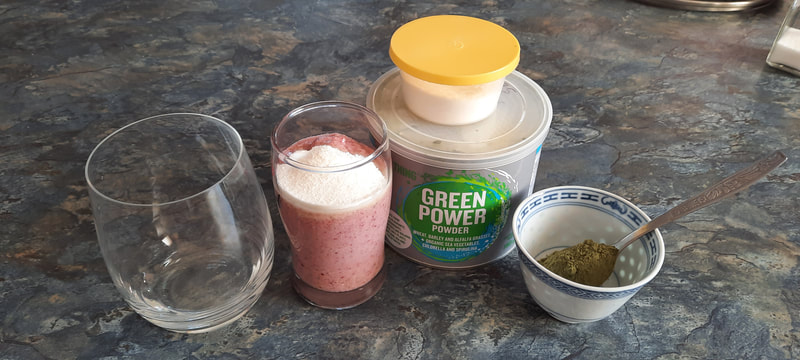
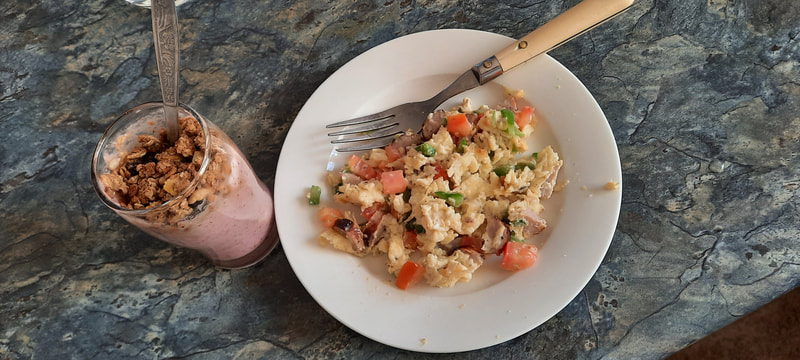
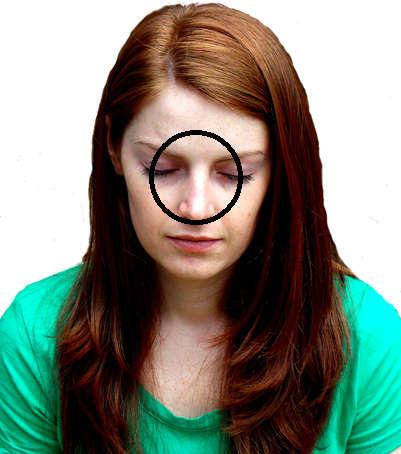
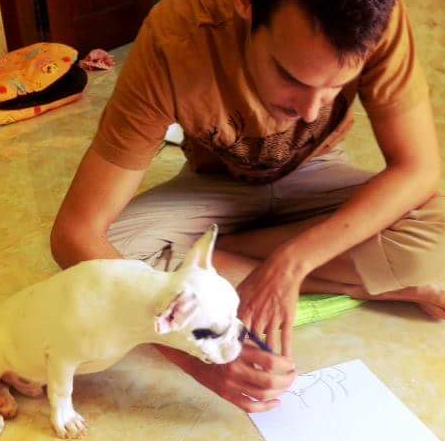
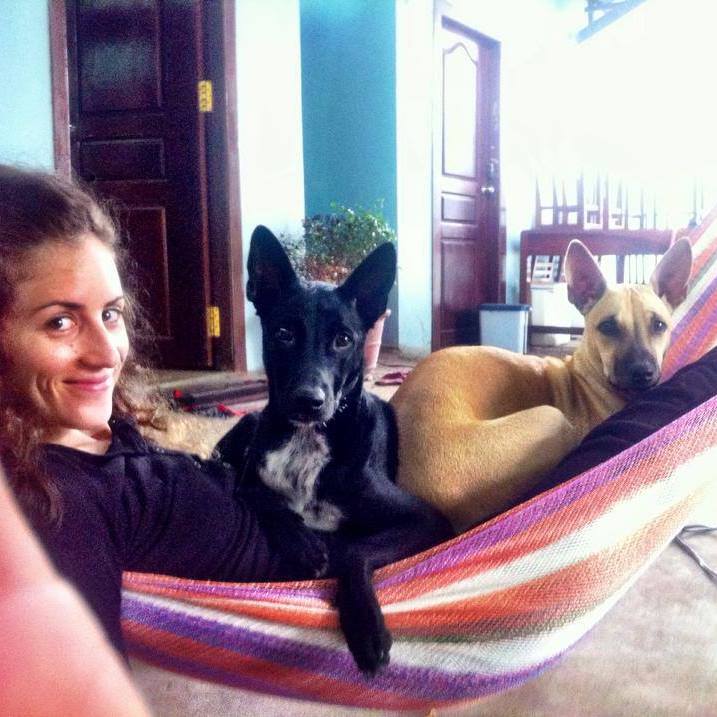
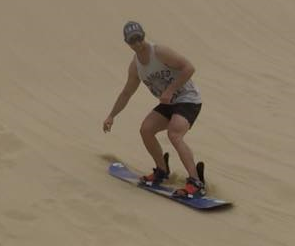
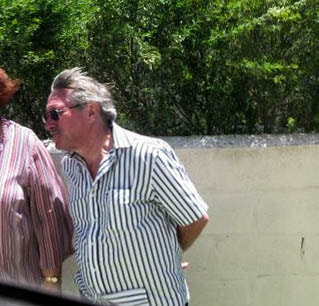
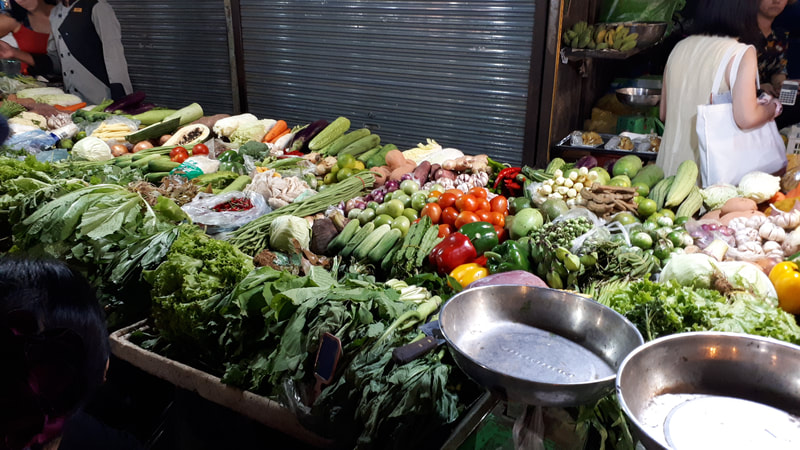
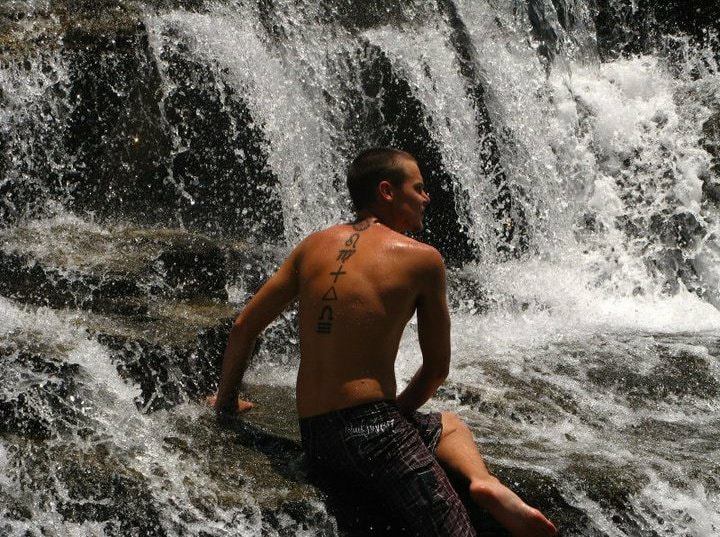
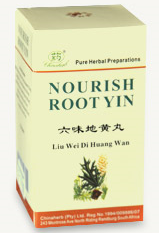
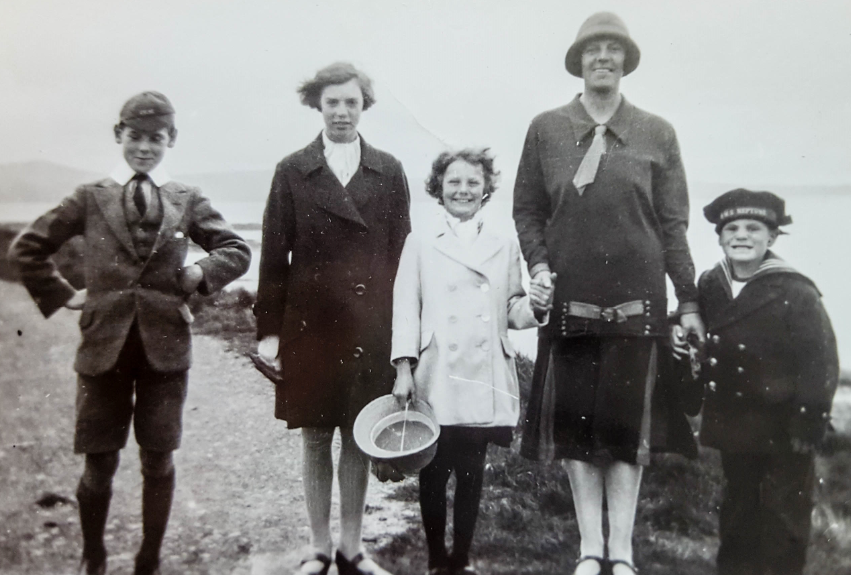
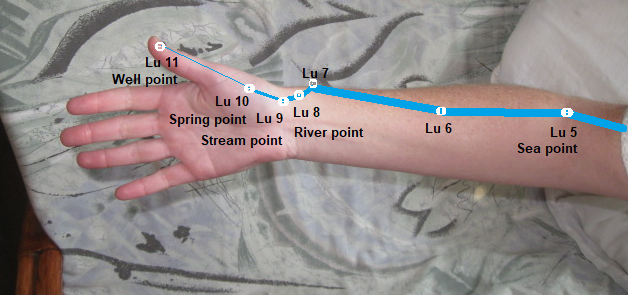
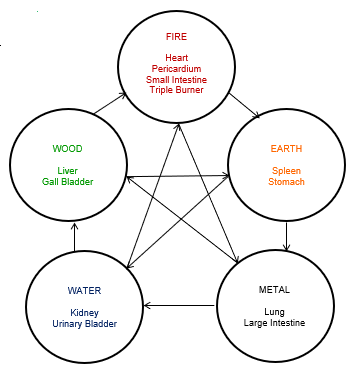
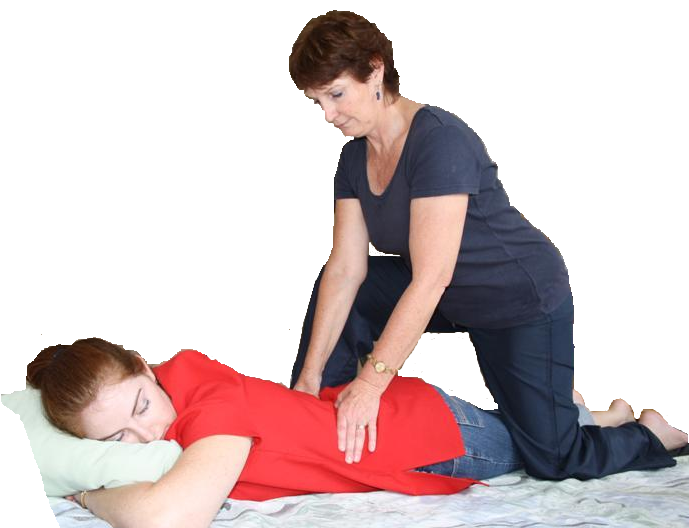
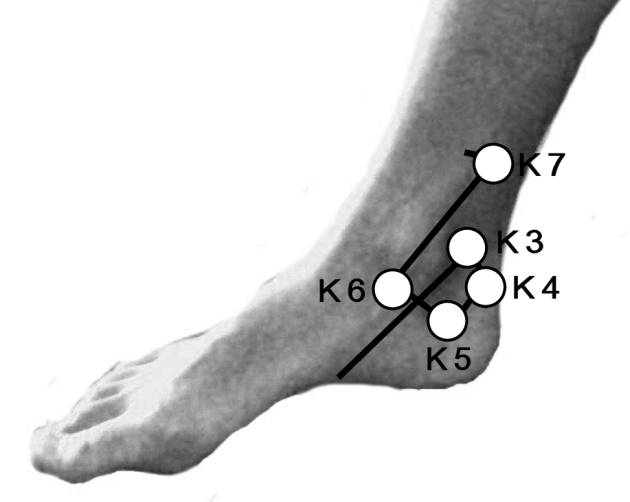
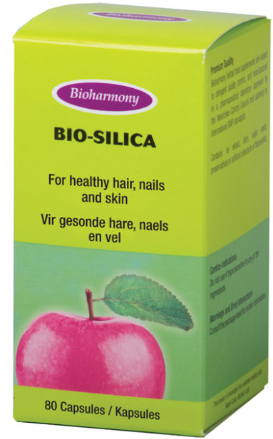
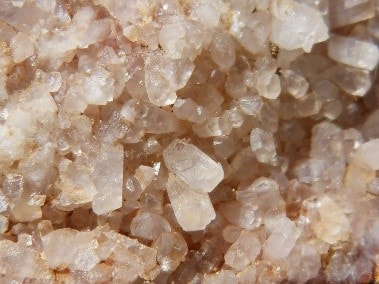
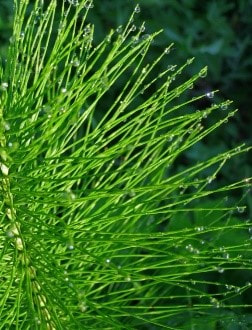
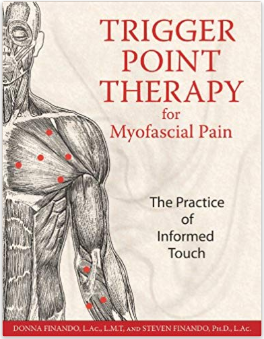
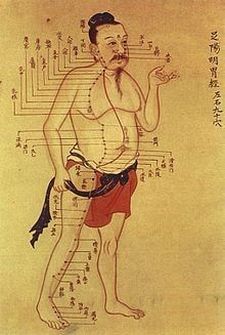
 RSS Feed
RSS Feed